Abstract
Hematological values of peripheral blood were determined for bovine fetuses and calves of various ages. Erythrocyte values increased through gestation. Fetuses 100 days or older had total values within the ranges of those reported for normal adult cattle. Mature erythrocytes were not observed in embryos and only a few were observed in fetuses 40 days of age. Fetuses 250 days or older had only a few rubricytes (<10/100 WBC). Leukocytes were first identified in the peripheral blood of a 45-day old fetus. Absolute leukocyte values increased through gestation and reached maximum values shortly before parturition. Granulocytes were first observed at 130 days of gestation and reached maximum values near parturition.
Total serum protein and gamma-globulin concentrations of colostrum-deprived calves were similar to serum protein and gammaglobulin concentrations of fetuses older than 265 days and were lower than values for the colostrum-fed calves. The immunoelectrophoretic pattern of 59-day old fetuses, the earliest age at which serum samples were obtained, demonstrated albumin, an α1 globulin and a β globulin, possibly transferrin. Additional α and β globulins appeared in the older fetuses and by 175 days of gestation serum electophoretic patterns of the fetuses were similar to patterns normally found with adult bovine serum except for the absence of the gammaglobulins in fetal serum. Immunoglobulin M was detected in 39 of 95 fetal serum samples by radial diffusion and in 13 of 95 samples by immunoelectrophoresis. Immunoglobulin G was detected in ten of 95 fetal serum samples by radial diffusion and in six of 95 samples by immunoelectrophoresis.
Full text
PDF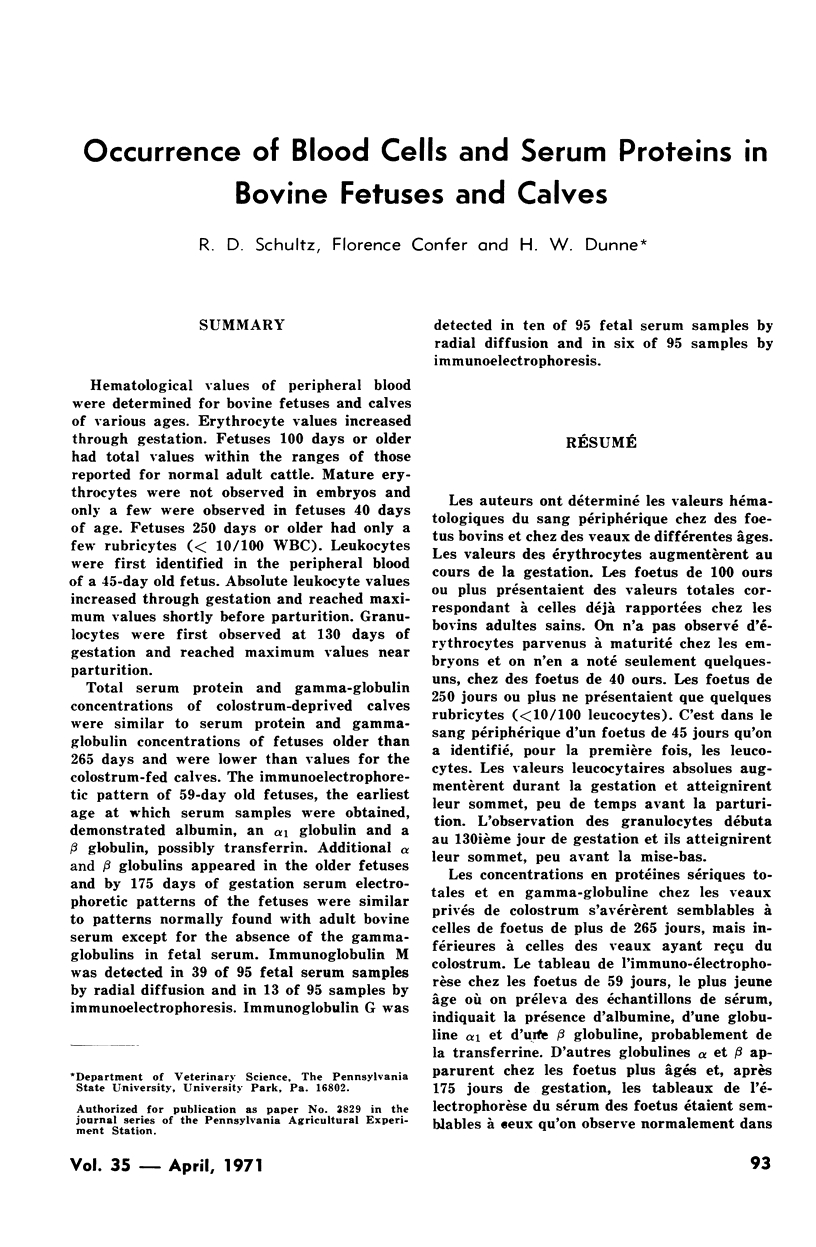
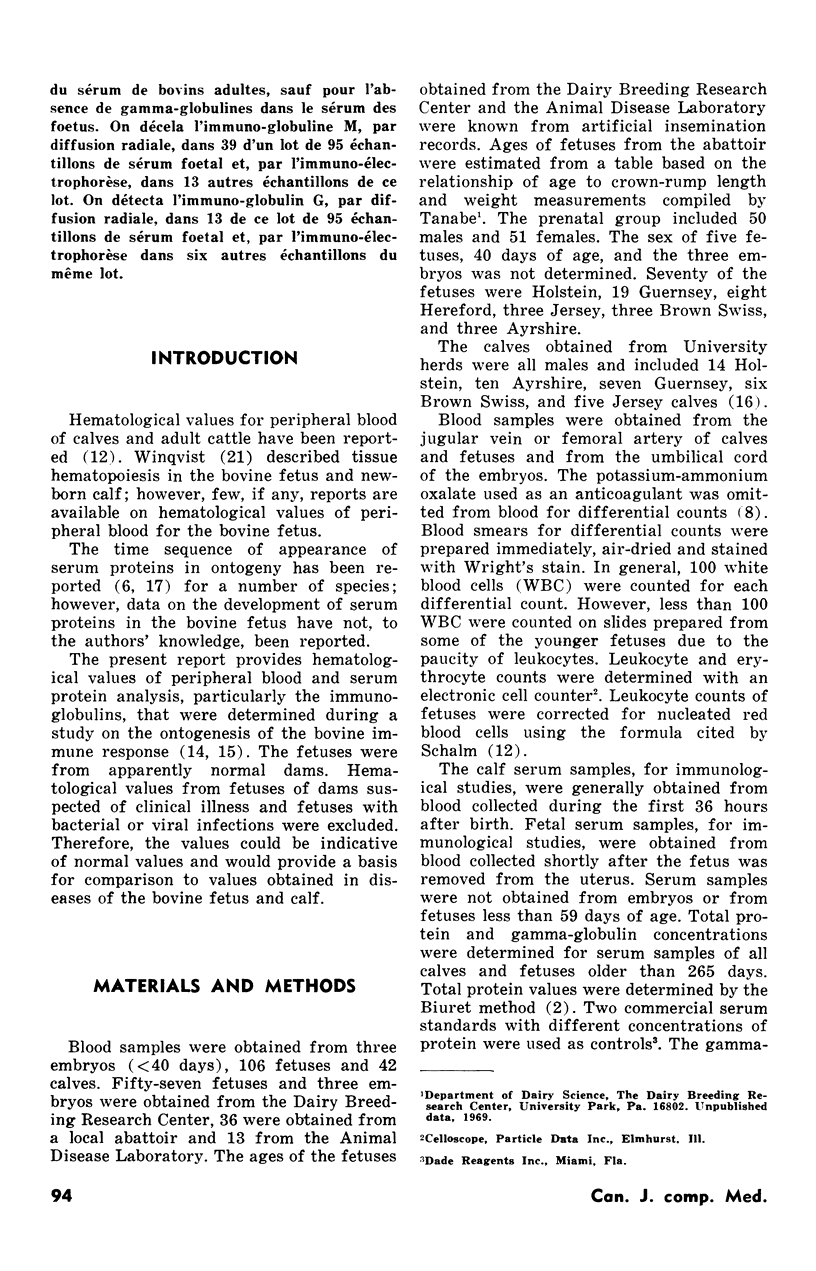
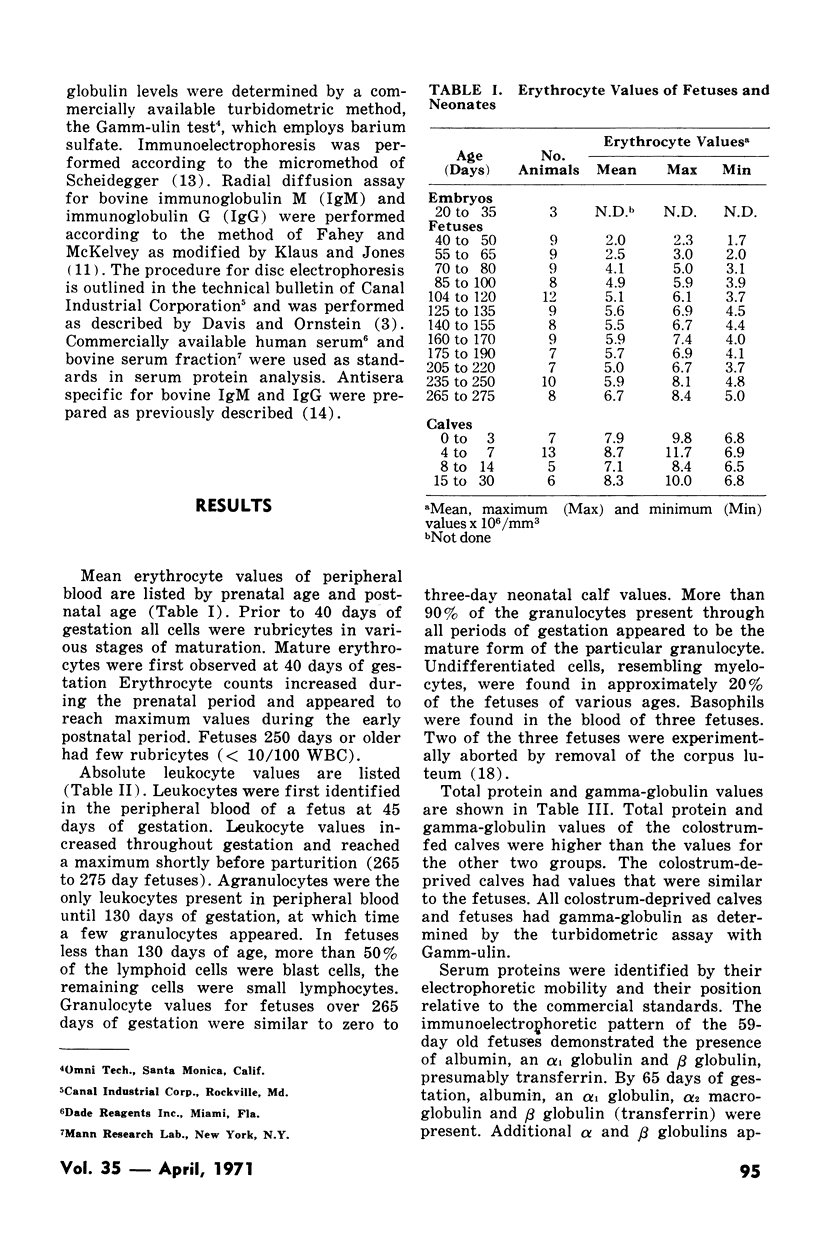
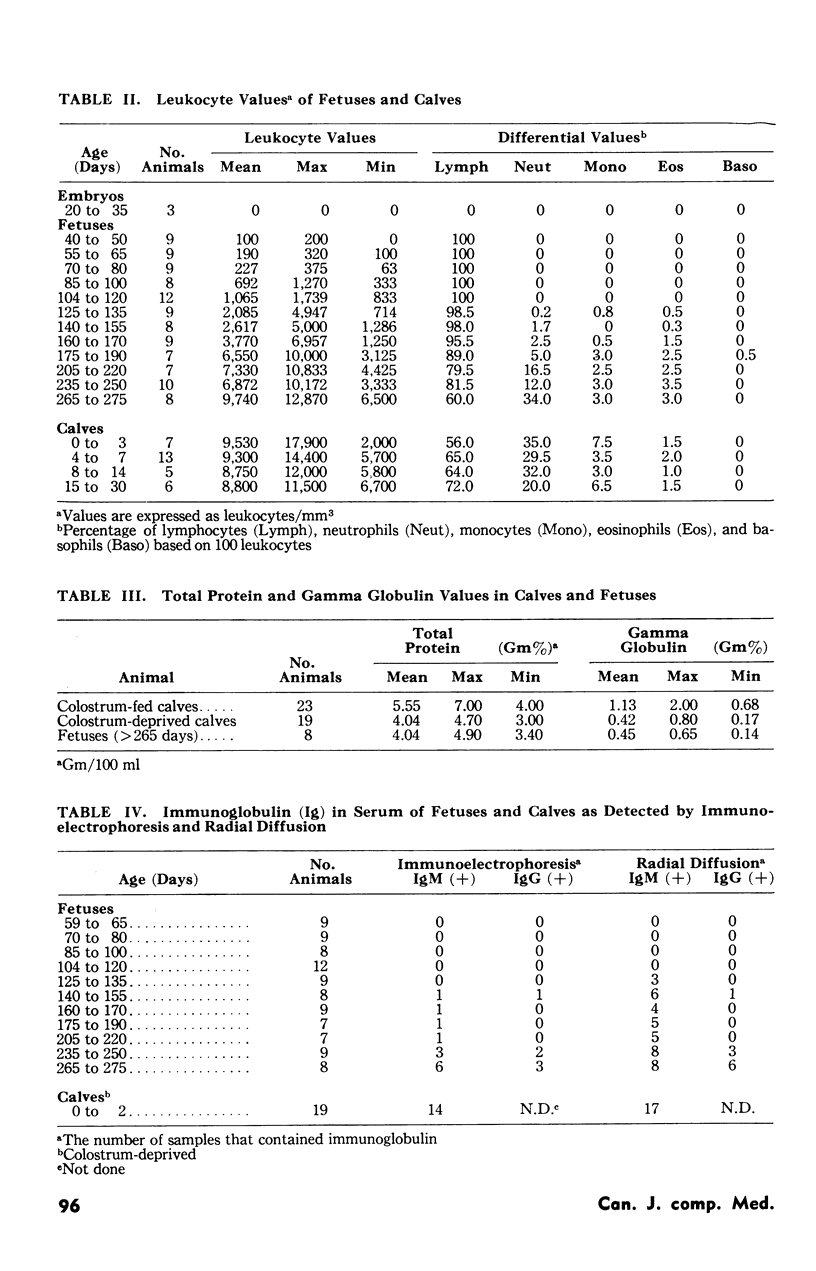
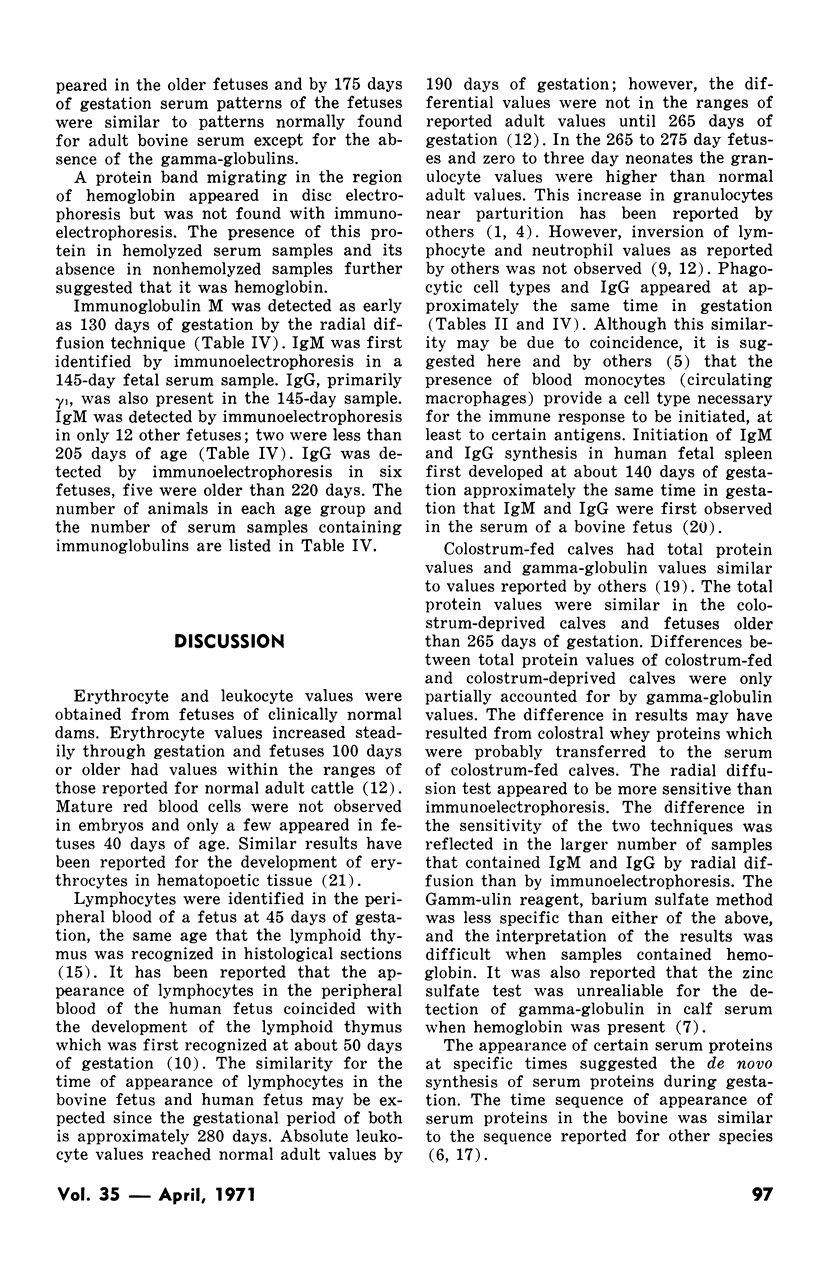
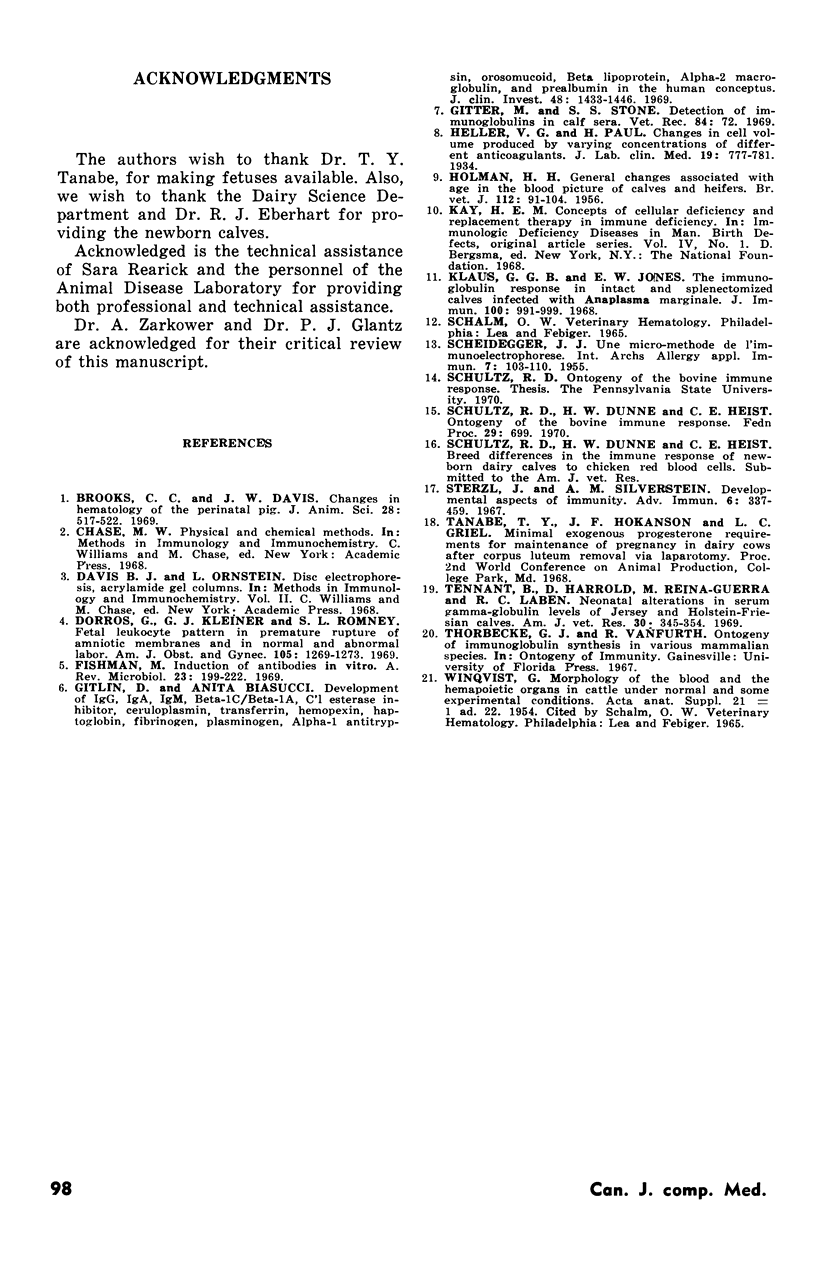
Selected References
These references are in PubMed. This may not be the complete list of references from this article.
- Brooks C. C., Davis J. W. Changes in hematology of the perinatal pig. J Anim Sci. 1969 Apr;28(4):517–522. doi: 10.2527/jas1969.284517x. [DOI] [PubMed] [Google Scholar]
- Dorros G., Kleiner G. J., Romney S. L. Fetal leukocyte pattern in premature rupture of amniotic membranes and in normal and abnormal labor. Am J Obstet Gynecol. 1969 Dec 15;105(8):1269–1273. doi: 10.1016/0002-9378(69)90301-9. [DOI] [PubMed] [Google Scholar]
- Fishman M. Induction of antibodies in vitro. Annu Rev Microbiol. 1969;23:199–222. doi: 10.1146/annurev.mi.23.100169.001215. [DOI] [PubMed] [Google Scholar]
- Gitlin D., Biasucci A. Development of gamma G, gamma A, gamma M, beta IC-beta IA, C 1 esterase inhibitor, ceruloplasmin, transferrin, hemopexin, haptoglobin, fibrinogen, plasminogen, alpha 1-antitrypsin, orosomucoid, beta-lipoprotein, alpha 2-macroglobulin, and prealbumin in the human conceptus. J Clin Invest. 1969 Aug;48(8):1433–1446. doi: 10.1172/JCI106109. [DOI] [PMC free article] [PubMed] [Google Scholar]
- Gitter M., Stone S. S. Detection of immunoglobulins in calf sera. Vet Rec. 1969 Jan 18;84(3):72–73. doi: 10.1136/vr.84.3.72. [DOI] [PubMed] [Google Scholar]
- Klaus G. G., Jones E. W. The immunoglobulin response in intact and splenectomized calves infected with Anaplasma marginale. J Immunol. 1968 May;100(5):991–999. [PubMed] [Google Scholar]
- SCHEIDEGGER J. J. Une micro-méthode de l'immuno-electrophorèse. Int Arch Allergy Appl Immunol. 1955;7(2):103–110. [PubMed] [Google Scholar]
- Sterzl J., Silverstein A. M. Developmental aspects of immunity. Adv Immunol. 1967;6:337–459. doi: 10.1016/s0065-2776(08)60525-8. [DOI] [PubMed] [Google Scholar]
- Tennant B., Harrold D., Reina-Guerra M., Laben R. C. Neonatal alterations in serum gamma globulin levels of Jersey and Holstein-Friesian calves. Am J Vet Res. 1969 Mar;30(3):345–354. [PubMed] [Google Scholar]


